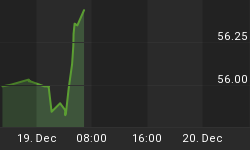Rising Treasury yields are weakening the U.S. Dollar. Traders are also concerned that the growing federal deficit will lead to a reduction of the U.S. debt rating. Traders are also positioning themselves ahead of this week's Treasury auction. Debt supply is expected to increase by as much as $101 billion with more to come.
The daily EUR USD is on pace to test a 50% level at 1.4184. Regaining this area sets up a further rally to 1.4621. The rapid rise in the EUR USD may become a concern for the European Central Bank if it begins to curtail export demand. This may not be known for some time however.
GBP USD traders continued to position themselves ahead of this week's U.S. Treasury auction as concerns over increased supply hitting the market is leading traders to think that U.S. debt is getting out of control. Traders are also building in a premium in anticipation of a possible debt reduction by either the S&P Corp. or Moody's debt rating service.
The daily chart indicates the GBP USD is on pace to test a 50% resistance level at 1.6085. Regaining this price on a closing basis could lead to a further rally to 1.6694. These are just upside objectives of where the market may run into resistance. Upside momentum is so strong that it would be foolish to stand in front of the trend. Aggressive counter-trend traders have to read the trade when this area is being tested for clues of the start of selling pressure.
A two-sided trade dominated the USD JPY on Friday. Early in the session, traders bought up the Yen over concerns that the U.S. was going to lose its top credit rating. Further strength was triggered by an optimistic statement from the Bank of Japan.
In a prepared statement, the BoJ upgraded a previously released negative comment by stating "economic conditions have been deteriorating, but exports and production are beginning to level out."
Late in the trading session, the USD JPY rallied after the Bank of Japan announced that it was no longer seriously considering an intervention as a means to weaken the currency. This reversed a down move from earlier in the week which was triggered by a BoJ "verbal intervention."
Like all countries that rely primarily on exports to boost its economy, do not believe that the central bank is not paying attention to currency prices and export numbers. Although our Fed is not too concerned about the value of the Dollar, the Bank of Japan takes a different view and will not hesitate to take action to weaken the Yen under the right circumstances.
Technically, the USD JPY is in a downtrend but found support in front of the March 19 bottom at 93.53. The daily closing price reversal bottom which was formed at 93.84 on Friday will be confirmed on a breakout over 94.91 next week. Although this formation will not change the trend to up, it is a strong indication that the buying may be greater than the selling at the current price level.
The USD CAD extended its losses this week fueled by news that the Canadian inflation rate is under control and in anticipation of a U.S. sovereign debt reduction.
Earlier in the week the Canadian government reported that inflation was in line with expectations. This meant that the Bank of Canada would not have to apply quantitative easing to boost the economy. This action which is basically printing money was perceived as bullish for the Canadian Dollar.
Later in the week, short-traders aggressively sold the U.S. Dollar in anticipation of a reduction in the U.S. debt rating. The expanding U.S. debt burden is raising concerns over the U.S. Treasury's ability to fund its debt obligations.
Based on the current chart pattern, the USD CAD is on pace to test a major retracement zone at 1.1059 to 1.0586. There could be profit-taking at this level or at the least a technical bounce. Don't anticipate anything until this zone is tested and momentum can be judged.
Fear is driving the USD CHF lower as the U.S. Dollar is losing its luster as a safe haven currency. Concerns over the expanding size of the U.S. debt and the U.S. ability to pay back its obligations, is leading traders to seek the safety of the Swiss Franc. Because of the spike in demand for hard assets, the Swiss Franc has also become an attractive alternative to the U.S. Dollar because of its huge inventory of gold.
Technically, the charts indicate further weakness as both the daily and weekly charts are in downtrends. This pair closed the week inside of a major retracement zone at 1.0972 to 1.0660. Based on the developing chart pattern, this market could accelerate sharply lower if the bottom end of the retracement zone is violated.















